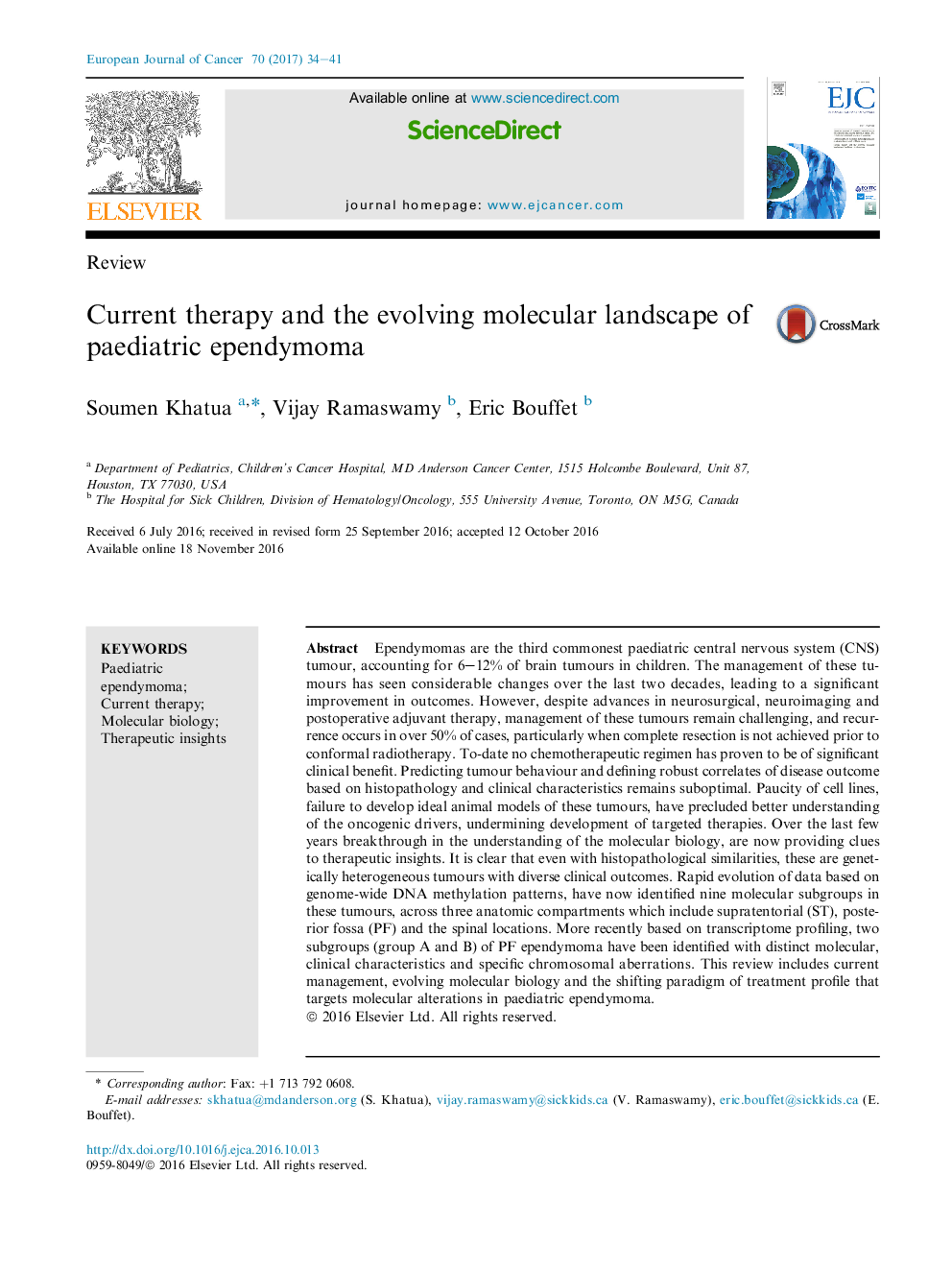| کد مقاله | کد نشریه | سال انتشار | مقاله انگلیسی | نسخه تمام متن |
|---|---|---|---|---|
| 5526821 | 1547063 | 2017 | 8 صفحه PDF | دانلود رایگان |
- Current management of paediatric ependymoma.
- Update on the evolving molecular biology.
- Shifting paradigm of treatment profile targeting molecular alterations.
Ependymomas are the third commonest paediatric central nervous system (CNS) tumour, accounting for 6-12% of brain tumours in children. The management of these tumours has seen considerable changes over the last two decades, leading to a significant improvement in outcomes. However, despite advances in neurosurgical, neuroimaging and postoperative adjuvant therapy, management of these tumours remain challenging, and recurrence occurs in over 50% of cases, particularly when complete resection is not achieved prior to conformal radiotherapy. To-date no chemotherapeutic regimen has proven to be of significant clinical benefit. Predicting tumour behaviour and defining robust correlates of disease outcome based on histopathology and clinical characteristics remains suboptimal. Paucity of cell lines, failure to develop ideal animal models of these tumours, have precluded better understanding of the oncogenic drivers, undermining development of targeted therapies. Over the last few years breakthrough in the understanding of the molecular biology, are now providing clues to therapeutic insights. It is clear that even with histopathological similarities, these are genetically heterogeneous tumours with diverse clinical outcomes. Rapid evolution of data based on genome-wide DNA methylation patterns, have now identified nine molecular subgroups in these tumours, across three anatomic compartments which include supratentorial (ST), posterior fossa (PF) and the spinal locations. More recently based on transcriptome profiling, two subgroups (group A and B) of PF ependymoma have been identified with distinct molecular, clinical characteristics and specific chromosomal aberrations. This review includes current management, evolving molecular biology and the shifting paradigm of treatment profile that targets molecular alterations in paediatric ependymoma.
Journal: European Journal of Cancer - Volume 70, January 2017, Pages 34-41
